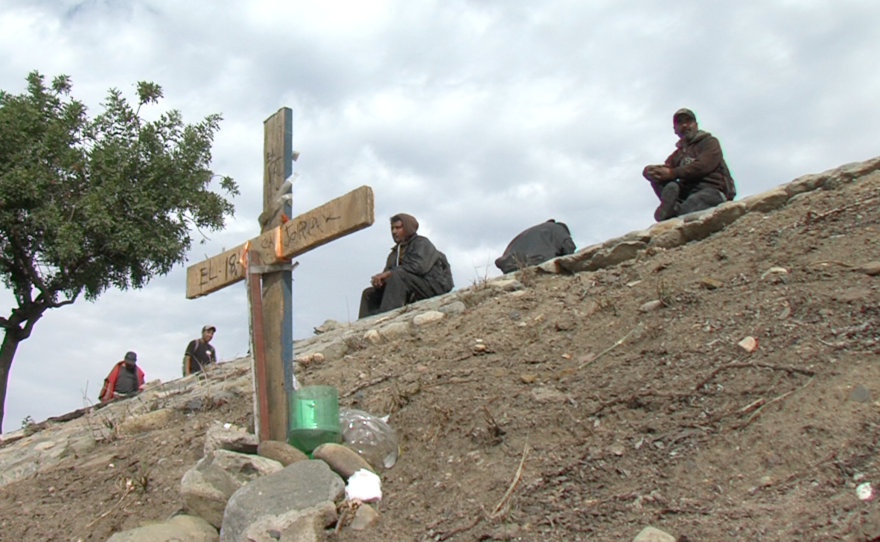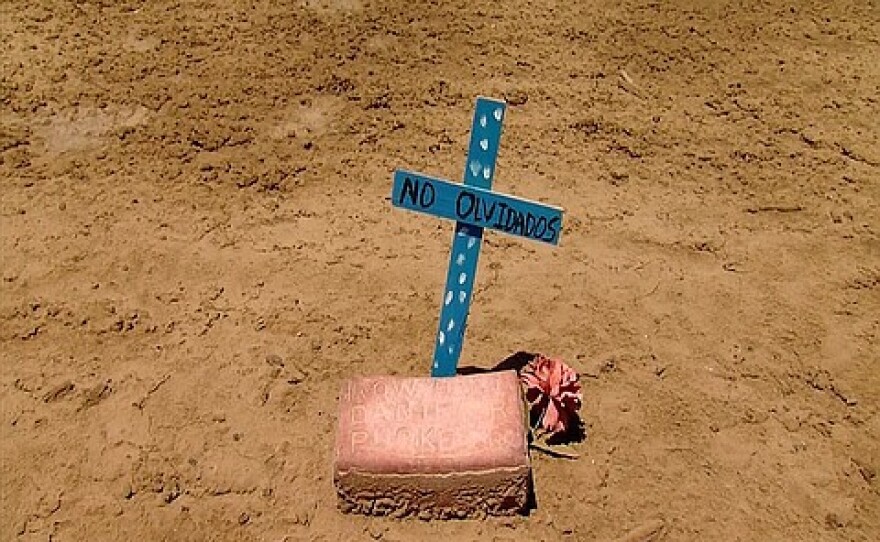Tijuana’s new police chief, José Luis López Medina, is continuing the former chief’s strategy of evicting homeless migrants from the Tijuana River canal.
Hundreds of homeless migrants, many of them deported from the United States, live in tunnels that branch from the canal. Earlier this week, several police trucks were visible driving along a dirt road on the canal’s rim. Migrants said Tijuana police are increasingly present in the canal.
“Do you see any (migrants) up there right now? No, right? Because the police are patrolling,” said Jose Alberto Zavala, a homeless migrant profiled in a previous KPBS story on the police canal strategy.
The police arrest the migrants, putting them in jail, in drug rehabilitation centers or on buses out of town. Police say the tunnel dwellers commit crimes and hurt tourism.
Wearing a baseball cap featuring the stars and colors of the U.S. flag, with the letters “USA” emblazoned across the front, Zavala said he was arrested just two weeks ago, allegedly for no reason.
Zavala is among dozens of migrants who claim police arrest them not only when they are in the canal, but also when they are trying to find work on the street, wiping car windshields at intersections or holding up signs offering construction services.

He said he was standing on a street about a block from the canal when he saw a couple trying to flag down a taxi and offered to help them in exchange for a few pesos. Just then, a passing police car circled around.
“I ran, because the police were after my bones,” he said, explaining that he sprinted across the highway into the canal. “I shouldn’t have done that because, imagine, a car could have killed me there.”
Since December, at least five migrants have died trying to escape police on the highways that flank the canal, according to witnesses. Zavala said three of those migrants were his friends. He has erected memorial wooden crosses for them along the canal.
Zavala said the police caught him, kicked him several times, then took him to jail on charges of violent assault. In court, a judge told Zavala he would be imprisoned for three years once the person he assaulted showed up to testify.
“But who was going to show up? The person I assaulted was invisible. I didn’t assault anybody,” he said. He was released after three days, he added.
Tijuana Police Chief López did not respond to requests for comment.
Last month, former Police Chief Alejandro Lares resigned after he was asked to leave. In a press release, Lares blamed “a perverse media campaign.” The news came a day after PBS NewsHour ran a story on the police department’s strategy toward homeless migrants.
A spokesman for the mayor’s office said the decision to ask Lares to resign was not motivated by any media coverage and that the canal strategy would continue as before because it was perceived as effective in reducing Tijuana’s crime rate.







